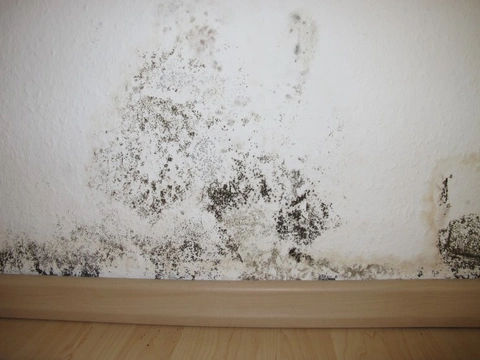
Black mould toxicity in dogs
Everyone knows better than to eat food that has gone mouldy, and that mould in general is not a good thing in most situations, but mould doesn’t have to be consumed to be harmful! Mould that lingers in damp corners of the home and that can sometimes be seen growing on ceilings and walls in homes that are particularly damp or that have leaking roofs can also pose a threat to the health of your pets such as cats and dogs, as well as to the people living within the home too.
This type of mould that is associated with damp, generally referred to as black mould, releases harmful spores that can cause respiratory problems, general malaise, and a range of other issues as well. In this article, we will look at black mould in more detail, including how it can affect dogs and what can be done about it. Read on to learn more.
What is black mould?
Black mould is a catch-all term used to refer to mould that is black in colour! However, when we refer to black mould, we usually mean mould of the genus Stachybotrys chartarum, which secretes myotoxins, a form of harmful spores that can affect the health of pets and people that come into contact with them.
Sometimes, homes that are very damp will have this black mould growing prolifically throughout several rooms of the home, and it can most commonly be spotted in the corners of walls where the wall joins the floor or ceiling, but it can potentially cover large areas of the walls or ceiling as well.
A generally damp environment, leaking windows or roofs, or internal water leaks can all provide the ideal environment for black mould to thrive, which can become problematic.
What does black mould toxicity do to dogs?
Black mould toxicity is usually slow to develop, and affects dogs that live in homes where there is a lot of black mould growth over time.
Over a period of medium to long term exposure, the presence of black mould spores that your dog inhales can lead to a range of respiratory and allergenic symptoms, such as a persistent cough, noisy or laboured breathing, red, itchy eyes, and a lack of tolerance for exercise. Your dog will also generally be lethargic and fairly sedentary, and may lose interest in their food. Over time, long term exposure to black mould will actually weaken your dog’s immune system, making them much more susceptible to becoming ill with other problems, and making it harder for them to recover when they do.
With longer-term exposure, the spores themselves will actually weaken the capillaries within the lungs of your dog, leading to their eventually haemorrhaging and resulting in internal bleeds, which can ultimately prove fatal, as the lungs fill up with blood.
The symptoms of long-term exposure to mould can be hard to differentiate from other forms of allergies, and can lead to chronic allergenic symptoms for anything from several months to several years before the condition becomes acute. However, your dog’s quality of life will not be optimum whilst they are suffering from the low level effects of exposure, and so it is vitally important that you never ignore these symptoms, as ultimately, they will make your dog very uncomfortable and can eventually prove fatal.
What can be done for affected dogs?
If your dog is displaying any of the above symptoms, black mould is just one of several potential causes, but if you have black mould growing in your home, you should tell your vet about this and take a sample along if possible, in order to make diagnosis easier and quicker.
Your vet will need to take a blood sample from your dog to identify whether or not the black mould spores are present within their body, and if they are found, the first and most important element of treatment is stopping the dog’s exposure to black mould entirely, and supporting their respiratory function and other systems that have been damaged.
Eradicating black mould from your home
In order to provide a safe, healthy living environment for your dog and your family, you should never ignore black mould in your home, and it is important to eradicate it entirely. This may mean that you will need to improve your damp coursing or carry out other works to fix leaks and general humidity that causes the mould to grow in the first place, as well as cleaning and killing the mould that is already present with the appropriate cleaning solution, such as borax.
You should always wear the appropriate skin protection and a mask over your nose and mouth when you do this, and keep your dog and your family well out of the way, as disturbing the mould will cause it to release more spores.
Additionally, keeping on top of any re-growth in future is important, as is ensuring that your home has good ventilation, and using air purifiers to remove spores from the air can help with this too.



